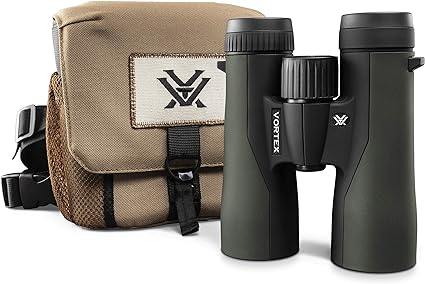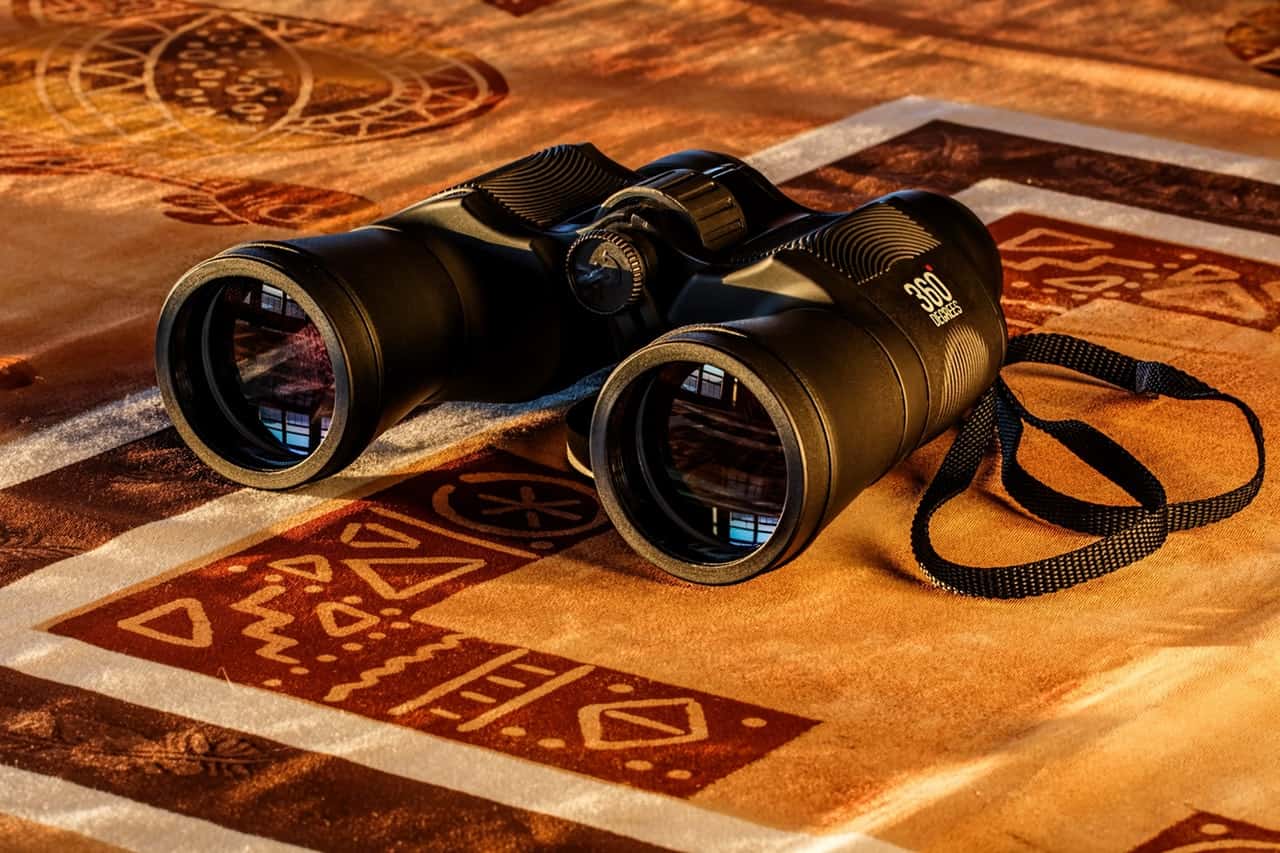Has anyone recommended you to get image stabilized binoculars because they’re a class apart? That’s what most people do; they’d ask you to change that old binocular and test the latest models.
But are these image stabilized binoculars even worth all that money? The answer depends on your interests; if you’re an astronomer/sailor, image stabilized binoculars are better than the traditional ones. However, if you’re a recreational glasser, sticking to the lower-end gadgets will serve the purpose just fine.
When you get to try the updated version of your favorite gadget, it always feels thrilling. Whether or not that gadget supports you, in the long run, depends on how you use it. If you want to know more about IS binoculars, keep on reading because I’ve clarified some important points in the following sections.
Here is a list of our top recommended Image Stabilization Binoculars:
- Canon 18X50 Image Stabilization Binoculars – Best for All Weathers
How do image stabilizing binoculars work?
Let’s start with a common example:
When you hold your binoculars while walking/moving, the imagery you see isn’t very clear; it’s rather blurry at times. This happens because your binoculars’ lenses cannot keep up with the continuous movement and produce unclear views.
Image stabilized binoculars are devised to end this trouble and produce well-balanced views. When you change your posture/position while looking through an IS binocular, it doesn’t show any frizz towards the edges.
What mechanism is used in these binoculars?
Image stabilized binoculars either use a gyroscope or electronic sensors that control the lenses’ performance as you move.
When you can’t hold your binoculars straight because of movement, vibration, or high magnification, the electronic sensors stop unnecessary movement, eventually keeping the imagery even.
A gyroscope works according to the earth’s gravity and doesn’t let your binocular move away from its central point, eventually improving the image quality.
But, if your IS binocular has electronic sensors, it detects uneven movement and helps you maintain a stable view.
Mostly the older versions of Image stabilized binoculars use a gyroscopic mechanism while the latest ones have electronic sensors; there isn’t much difference between the two, though.
When should you opt for Image stabilized binoculars?
The purpose of Image stabilized binoculars, as the name suggests, is to remove any distortion from your views. But when should you consider buying an IS binocular is a crucial point to ponder over.
When you use a high-power binocular (consider one above 7x magnification), maintaining a seamless field of view is challenging. A slight movement/jitter in your hand and the whole view gets blurry, eventually straining your eyes.
That’s when Image stabilized binoculars help. They offer jitter-free views that aren’t affected by the magnification either. When you love astronomy or sailing, an image-stabilized binocular ensures you see steady views instead of those odd-looking edges.
If you are looking for extremely good quality IS binoculars in a mid-range price tag, Canon 12×36 IS stabilized bino is the way to go.
However, if you own a binocular with less than 7x power, the IS feature isn’t mandatory for you as slight vibrations don’t affect lower magnifications.
Also, if you glass in broad daylight, glare and mirage might disturb your focus. But when you use IS binoculars, the views are always seamless.
Can you stabilize regular binoculars?
There is an argument that if held rightly, regular binoculars also perform like the IS ones. To no one’s surprise, this is true.
Since the sole purpose of Image stabilizing binoculars is to prevent shakiness, you can achieve this with traditional binoculars as well.
Here’s what you need to do:
Get a tripod for your binoculars and learn to balance it, irrespective of the terrain underneath. When you have a stable tripod, little hand/shoulder movements or wind doesn’t disturb the image quality that you receive.
However, tripods only work for static glassing missions where you have to focus on one point, i.e., a star. This little trick doesn’t work when you sail, travel, or run because, in those cases, a tripod is added burden.
Which activities need image stabilization the most?
Since Image stabilizing binoculars are expensive, not every glasser can afford or use them. But, when you’re on a mission or simply love exquisite views, IS binoculars are the bid.
Here are a few activities where these binos will give you the edge:
Astronomy
Astronomers cannot and should not stick to low-end gadgets because they don’t meet the requirements of this absorbing hobby. When you wish to look at a comet or the Milky Way galaxy, keeping the imagery shake-free isn’t easy.
Especially if you don’t use a parallelogram mount or a heavy-duty tripod, forget seeing an unwavering celestial view. Luckily, Image stabilized binoculars take this burden off every astronomer’s shoulder by offering impressive optical performance
When your binocular is set on high magnification, the usual movement of your hand or the mount won’t affect your view because an IS binocular is made to overcome those jitters.
Sailing
When you’re moving, holding a binocular straight is tricky. Even if you manage to maintain a balance, you’ll shortly get tired by standing in the same posture.
That’s why Image stabilizing binoculars are quite popular amongst the marine forces and frequent sailors. When you focus on the water while moving, it causes nausea and blurry views.
Image stabilizing binoculars ensure that you enjoy boating and look at your favorite water body without hassling with the optical clarity.
If you’re a passionate voyager/sailor, an IS binocular will be a wise investment in your gear.
Hunting
Although hunters prefer waterproof (which most IS binos are not) and sturdy gadgets, this technique can immensely help them.
For example, when you chase a distant moving target, shooting it is very challenging. One second your view will be clear, and the next moment, you might lose your aim point.
That’s when an IS binocular comes to the picture. It lets you, scout, focus, and shoot the target animal/bird without showing any fringing.
Hunting competitions feel much more exciting when your optics tool is par excellence, get an Image stabilizing bino and see for yourself.
Birding
Birding is the least favored hobby when we talk about Image stabilizing devices, mainly because it’s not as crucial as sailing or astronomy.
Most birders are recreational glassers that stick to traditional binoculars as they don’t need high magnifications.
But if you are not a balcony birder and go to the woods to satiate this hobby of yours, an IS binocular should be on your list.
Image stabilizing lets you enjoy an exotic view without asking for repetitive adjustments, as their prisms are designed to stay shake-free.
Is there any downside to using IS binoculars?
Despite having so many advantages, the Image stabilized binos have a few cons too. Let’s discuss them before the final verdict:
Waterproofing
Most Image stabilized binoculars are not water/weatherproof because they aren’t designed that way. This drawback limits these gadgets to less challenging tasks i.e., birding, astronomy etc.
If you want to take an IS binocular to a wild hunting field, you might regret it because it’s not supposed to stay fog-free.
Focusing
As long as your view is straight, you’ll receive incredible clarity. But the minute you have to change the focusing point, there will be a lot of jitters, vibration, and fuzz.
This happens because IS binoculars are usually set on high magnifications, hence all that vibration. Image stabilizing binos give you a tough time when you try to focus with them, but once you’re through, the optical clarity will amaze you for sure.
Final words
There’s an ongoing debate amongst the glassers about the usefulness of Image stabilized binoculars; some say they’re unavoidable, while others prefer the older versions.
What you do depend upon your adventures. If you love studying celestial bodies from your balcony or any other high point, an image stabilized binocular will definitely come in handy.
But, if you’re a recreational glasser, investing in this high-end gadget won’t suit you. You should instead stick to a good-quality standard binocular that can withstand all weather hardships without giving in.
I’m sure your concerns about Image stabilized binoculars will be clear now, and you’ll decide according to your passion for glassing.






